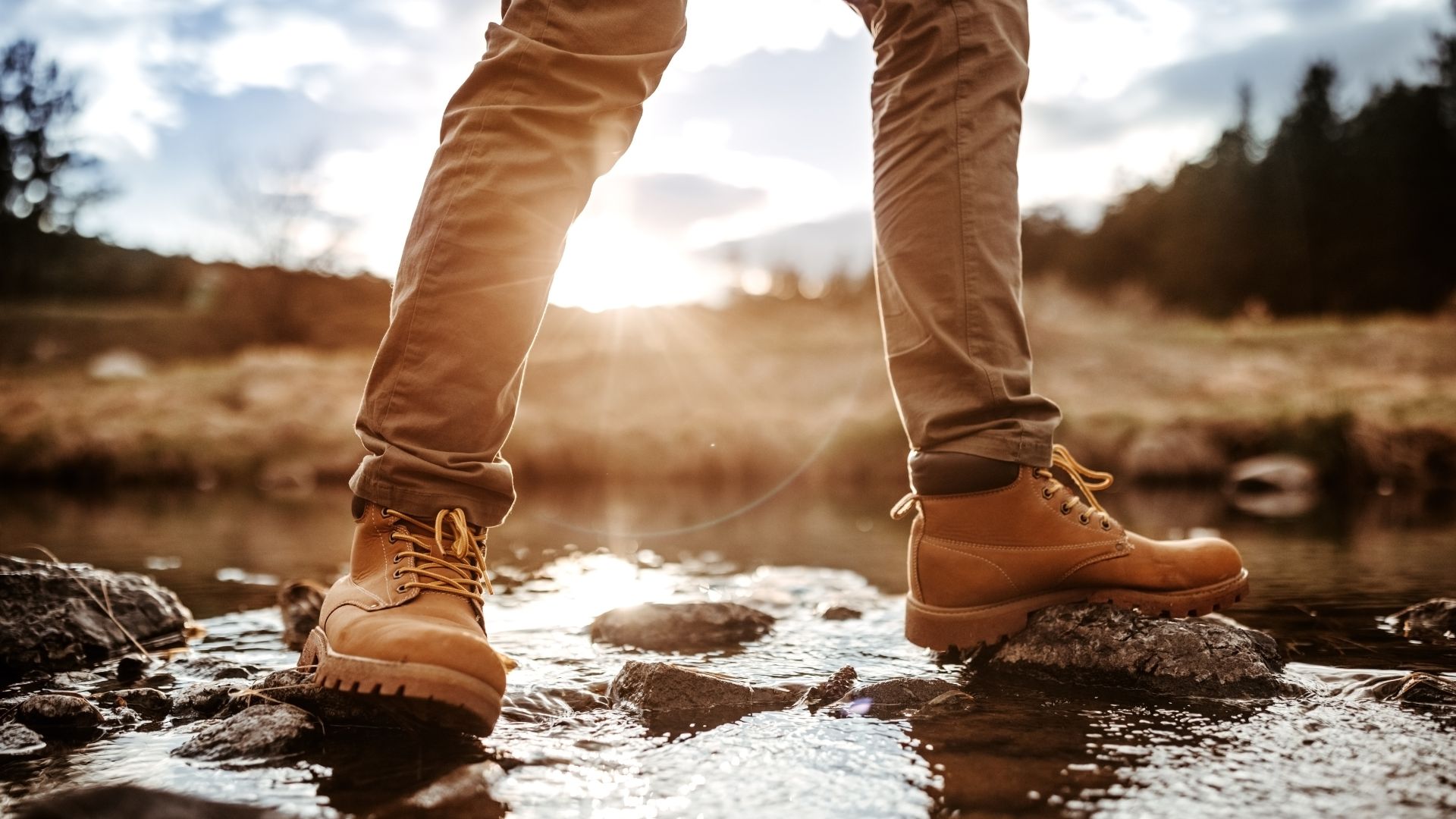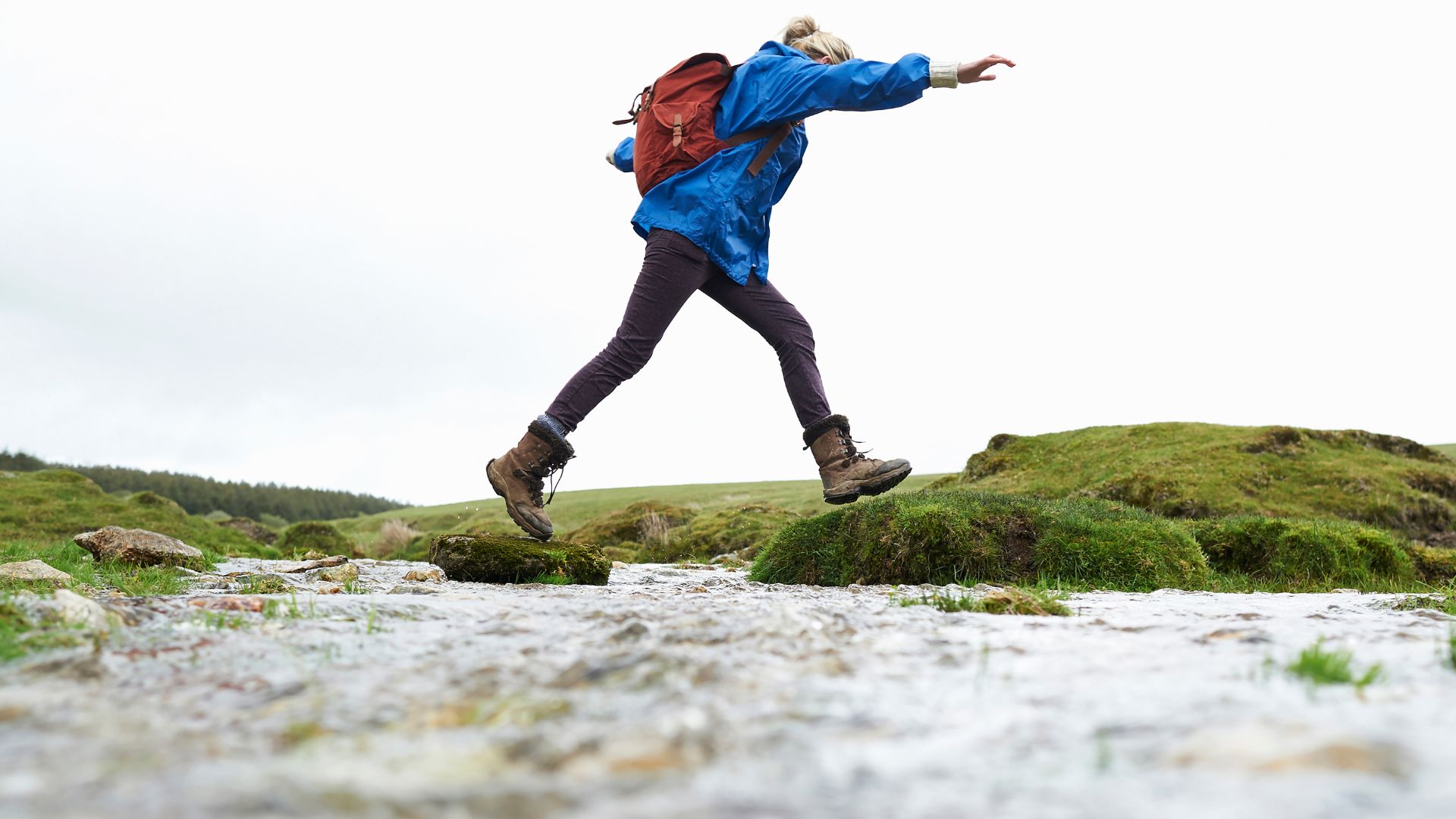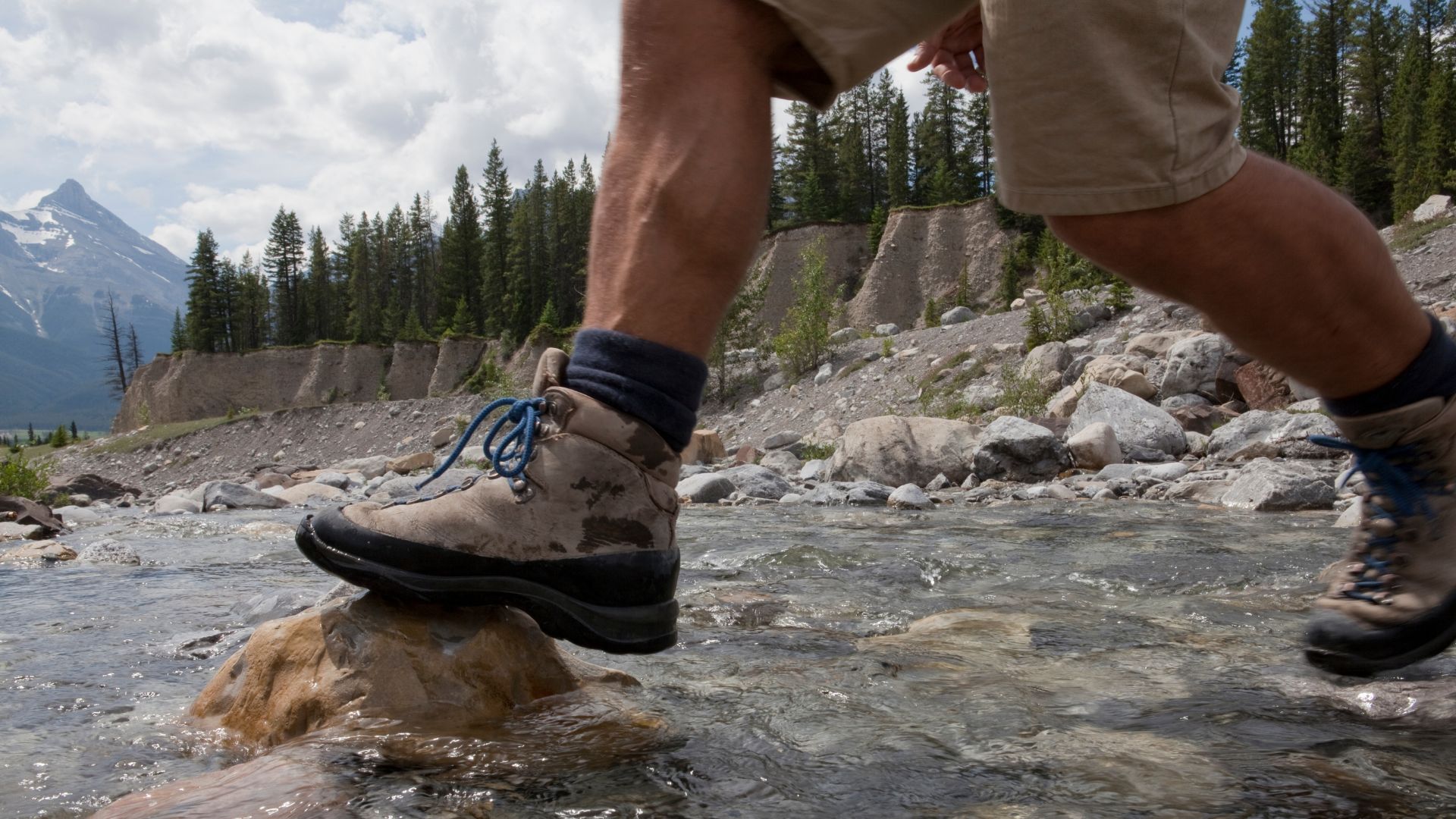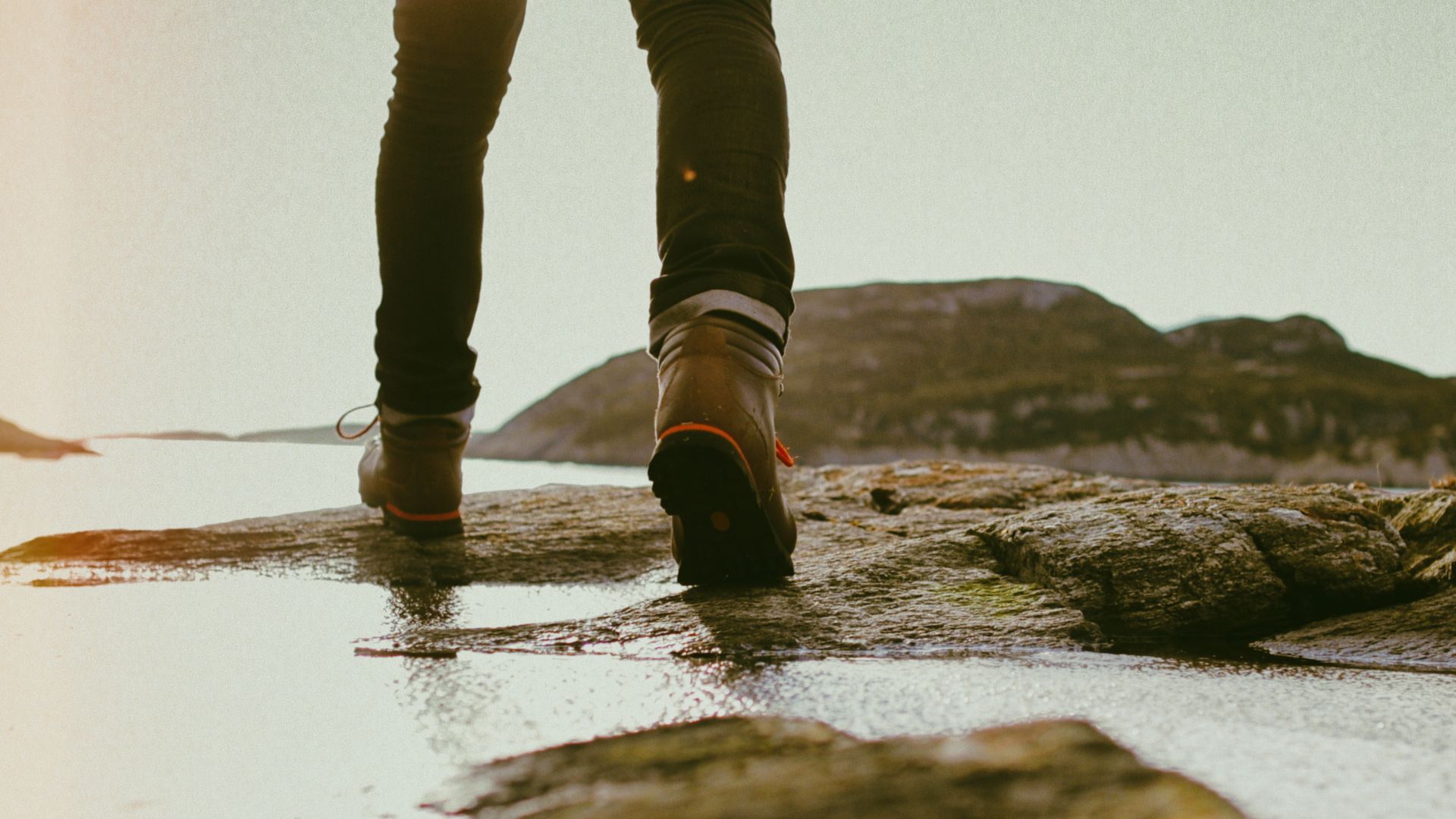
‘Do I need waterproof hiking boots’ is one of the most commonly asked questions when it comes to hitting the trails, and rightly so. After all, choosing the right pair of hiking boots or walking shoes can be a make or break decision. Get it wrong, and it can be a one-way ticket to an uncomfortable hike and, worse…wet feet.
With the help of an outdoor expert, we look at the features of both, waterproof and non-waterproof hiking boots, their pros and cons, and the type of environment they’re best suited for, to help you decide which boot is best for you.
Features: waterproof and non-waterproof hiking boots
The main difference between waterproof hiking boots and non-waterproof hiking boots is that the former is made with a waterproof membrane layered into the material of the boot (such as Gore-Tex or DVdry) to stop your feet from getting wet, or leather. This means that waterproof hiking boots tend to be less breathable, as they’re trying to keep moisture out, as well as being heavier and more expensive.

Non-waterproof hiking boots, on the other hand, don't have this waterproof membrane. Instead, they tend to have mesh paneling or are made from lightweight materials to encourage airflow and keep your feet cool. This also makes them more lightweight and less rigid.
“Other features will generally be the same though,” says Gemma Smith, Footwear Buyer at Cotswold Outdoor. “Both boots will have varying levels of support in the outsole suited to different terrain and end use, cushioning in the midsole and support throughout the boot, around the cuff, and with the lacing.”
When do you need waterproof hiking boots?
If you’re hiking in wet, muddy, cold conditions (or all three), then waterproof hiking boots are your best bet. With a pair of waterproof hiking boots you’ll be able to walk through shallow streams and puddles without having to worry about your feet getting soggy (just make sure water doesn’t go over the top of your boot because if it gets inside of them they will remain wet). As they have less breathability, they'll also keep your feet nice and warm in colder climates.

Are waterproof hiking boots 100% waterproof?
Unfortunately, they’re not. “The membrane keeps water out up to a certain level of pressure, but if they are continuously submerged water will eventually seep through,” says Gemma.
Keeping your waterproof boots clean and reproofing the outer (just as you would with your waterproof jacket) will improve their waterproof performance, as well as enhance their overall lifespan. Gemma advises: ”Make sure to read the care labels to ensure your boots are looked after properly. But, if you plan on standing in water for long periods, then wellies are the best option.”
- Check out T3's best wellies
Final thoughts

Deciding whether you need waterproof hiking boots or not ultimately comes down to the type of terrain you'll be encountering and the weather conditions.
“Waterproof hiking footwear is best for changeable weather environments or to use all year round to offer protection when walking in long grass, through mud and crossing small streams etc,” says Gemma.
“Whereas non-waterproof hiking footwear is slightly more breathable (since there is no additional membrane), and use materials like mesh and lightweight fabrics for better ventilation, making them best for dry environments where breathability is key."
Alternatively, avid hikers can always opt for two pairs of hiking boots – a waterproof and non-waterproof pair – so that they can switch between the two throughout the year as and when needed.







